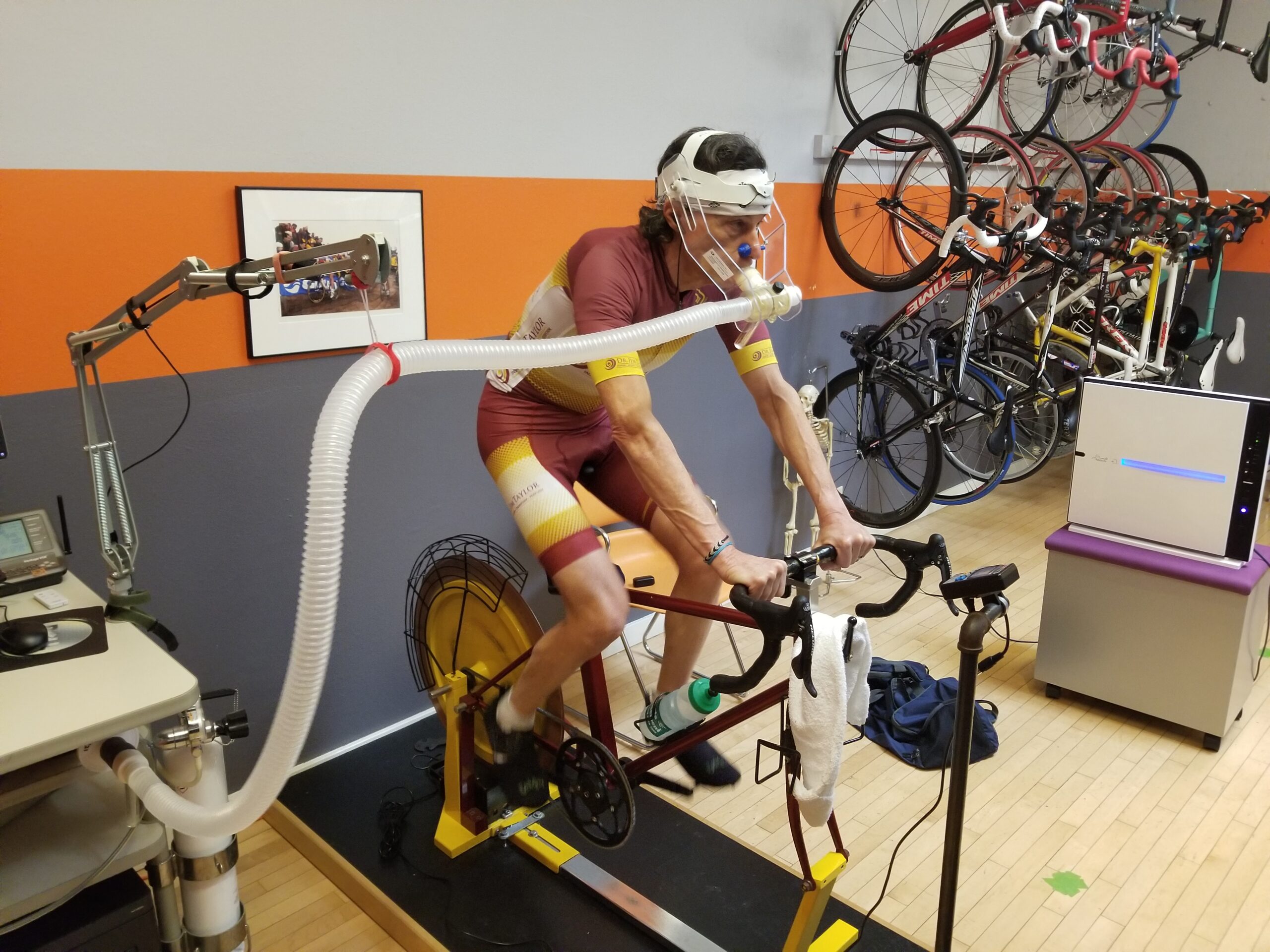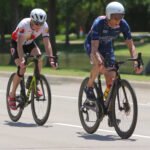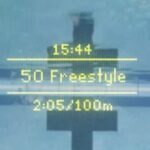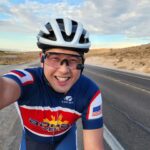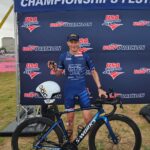This article offers you a “two-fer!” I will describe my own personal experience with bike fitness testing while also highlighting the psychological benefits of the technology behind it.
I’ve been doing FTP testing for three years now. Since beginning to work with my coach, Dr. Greg Rhodes, the last two tests involved a more sophisticated testing approach that included body composition  assessment, and oxygen and blood analyses under the guidance of Tim Fleming, an M.S. in Exercise Physiology and owner of Endurance Performance Training Center. Last month, Tim introduced me to an even higher level of testing using the INSCYD method, a testing protocol that is used by World Tour cycling teams and Olympic sports federations, as well as many professional triathletes, runners, and other endurance athletes.
assessment, and oxygen and blood analyses under the guidance of Tim Fleming, an M.S. in Exercise Physiology and owner of Endurance Performance Training Center. Last month, Tim introduced me to an even higher level of testing using the INSCYD method, a testing protocol that is used by World Tour cycling teams and Olympic sports federations, as well as many professional triathletes, runners, and other endurance athletes.
There are a number of ways to do an FTP test:
- A true one-hour, all-out-effort, which is perhaps the purest form of an FTP test because it actually tests what you are assessing (very rare because it is so painful and physical taxing).
- 8-minute test.
- 20-minute test (the most commonly used).

- Ramp test (increasing power every few minutes until you can’t go any longer).
- 4DP test (all out effort for 5 seconds, 1 minute, 5 minutes, 20 minutes).
Each of these common FTP test protocols has its advantages and disadvantages, and all can provide a reasonable approximation of your FTP that you can use to establish your training zones. And all can be done at no cost on your indoor trainer.
 INSCYD uses a different system that is comprised of three six-minute efforts at increasing levels of wattage (as determined by your blood analysis; mine were 200w, 220w, 240w) with recovery in between (again based on your blood analysis) and concluding with a 2:30-5-minute, keep-going-for-as-long-as-you-can-turn-the pedals effort at some wattage as determined by the data so far in the test (mine was 250w and I lasted 3:29 minutes; I wasn’t dying, just couldn’t turn my pedals any longer).
INSCYD uses a different system that is comprised of three six-minute efforts at increasing levels of wattage (as determined by your blood analysis; mine were 200w, 220w, 240w) with recovery in between (again based on your blood analysis) and concluding with a 2:30-5-minute, keep-going-for-as-long-as-you-can-turn-the pedals effort at some wattage as determined by the data so far in the test (mine was 250w and I lasted 3:29 minutes; I wasn’t dying, just couldn’t turn my pedals any longer).
The INSCYD methodology involves direct measurement of essential physiological markers, through real-time blood collection:
- Aerobic capacity (VO2Max)
- Lactate production rate (VLamax)

- Anaerobic threshold (AT)
- Metabolic efficiency (Fatmax)
- Carbohydrate absorption rate (Carbmax)
- Functional Threshold Power (FTP)
- Body composition data (lean and non-lean body mass).
I Practice What I Preach
Those are the facts, now for the experience of FTP testing. The reality is no one likes FTP testing. Why? Because it’s painful, as you have to push your physical limits for various lengths of time (the ramp test is probably the least painful free test because the “hurt locker” only opens the last few minutes on the highest steps of the ramp). I found the INSCYD test hard, but not terrifyingly so.
 I never looked forward to FTP testing for two reasons. First, as I just noted, it always hurts…a lot. Second, it provides something of a moment of truth in which my hard-data fitness is revealed and all of my efforts to date are put on the line. In other words, will all of my pain, sweat, and tears have been worth it?
I never looked forward to FTP testing for two reasons. First, as I just noted, it always hurts…a lot. Second, it provides something of a moment of truth in which my hard-data fitness is revealed and all of my efforts to date are put on the line. In other words, will all of my pain, sweat, and tears have been worth it?
Going into the INSCYD test, I wasn’t overly optimistic. My first-ever FTP test back in 2020 was 186 watts and, in 2021, I did make some gains up to 196 watts, so a trend positive trend. I’ve always aspired to reach 200 watts because it is a good round number, but I truly didn’t think it was possible. 2022 saw a real decline in my FTP, 176 watts, because I was still recovering from my hit-and-run bike collision in September of 2021. I missed more than five months of training recovering from my injuries and wasn’t fully healed when I took the test in March of 2022.
Second, I’ve never been a power guy on the bike and my wattage definitely wouldn’t strike fear in the hearts of my competitors. I was barely a middle-of-the pack cyclist in triathlons (my strength is my running). My watts per kilogram (w/kg), a better measure of power because it takes into account body weight (all else being equal, a heavier cyclist will be able to put out more watts because, presumably, much of the added weight is muscle), was only 3.1 w/kg. My coach, Greg, told me that if I wanted to be competitive on the bike, I had to get my w/kg up to at least 3.5. To be honest, I never thought it would happen. 3.5 w/kg comes out to 217 which is a substantial increase over my previous FTPs.
weight (all else being equal, a heavier cyclist will be able to put out more watts because, presumably, much of the added weight is muscle), was only 3.1 w/kg. My coach, Greg, told me that if I wanted to be competitive on the bike, I had to get my w/kg up to at least 3.5. To be honest, I never thought it would happen. 3.5 w/kg comes out to 217 which is a substantial increase over my previous FTPs.
With the numbers already against me to make such a big gain, there was another number that was also not on my side, namely, my age. Though I may be in the best overall shape of my life (I had a different type of fitness during my Ironman years), I’m no longer a young man. For many at my age, it’s not about getting fitter and faster, but rather about slowing the decline in fitness and speed as much as possible.
It sure felt like the odds of meaningful power gains were against me. At the same time, given what I do for a living, I had to “practice what I preach.” So I did what I tell the athletes I work with to do as I approached my FTP test: be positive, do lots of imagery, focus on the process, make a commitment to giving my best effort, and, in the painful moments of the test, to tell myself, “I choose to push my limits.” So that’s what I did. And guess what? My FTP was 230 watts!! I was truly blown away with this result because I far exceeded any hopes or expectations I had before the INSCYD test. 230 watts is a 24% increase over 2022 and a 15% increase over 2021 when I was healthy.
approached my FTP test: be positive, do lots of imagery, focus on the process, make a commitment to giving my best effort, and, in the painful moments of the test, to tell myself, “I choose to push my limits.” So that’s what I did. And guess what? My FTP was 230 watts!! I was truly blown away with this result because I far exceeded any hopes or expectations I had before the INSCYD test. 230 watts is a 24% increase over 2022 and a 15% increase over 2021 when I was healthy.
I did the math, and my new w/kg is 3.7. If this translates into faster times on the bike (which, technically, it should), I might actually be “in the game” in the bike leg of my races. What a truly exciting possibility! I also had some real-world confirmation of my gains in my first race of the season, the Stanford Treeathlon  Sprint at the beginning of March. In the bike leg (12.4 miles), my “normalized power” (NP) was 203 watts on a course that had seven 180-degree turns (meaning I had to stop pedaling, slow way down, go to zero watts, and build back up seven times). Greg figured that my real NP was closer to 210 if not higher. As a point of reference, I had never held more than 192 NP in a race before.
Sprint at the beginning of March. In the bike leg (12.4 miles), my “normalized power” (NP) was 203 watts on a course that had seven 180-degree turns (meaning I had to stop pedaling, slow way down, go to zero watts, and build back up seven times). Greg figured that my real NP was closer to 210 if not higher. As a point of reference, I had never held more than 192 NP in a race before.
This immense gain in my cycling fitness was incredible validation of my training program (thanks, Greg!) and my commitment and efforts to be the best triathlete I can be (and to see if I could step it up a notch or two in 2023 as I move up to a new age group where I am now a “baby.”)
Psychology of Sports Technology
Now for the psychology of sports technology part of this article. Obviously, the data collected from the INSCYD assessment are really valuable for Greg in creating my periodized intensity and volume plan, season-long training blocks, weekly training schedules, and race taper and preparation. At the same time, the results of this testing had a huge impact on me psychologically and emotionally.
First, my gains were a turbo boost to my motivation. There is nothing more encouraging than seeing your efforts rewarded with new levels of fitness. I was so psyched up by my test results that I’m determined to push myself even harder (within the confines of Greg’s training schedule; I want to overreach, not overtrain!) to continue to build my fitness and speed as I approach the USAT Multisport National Championships, my first “A” series of races of 2023, beginning April 18th in Dallas.
push myself even harder (within the confines of Greg’s training schedule; I want to overreach, not overtrain!) to continue to build my fitness and speed as I approach the USAT Multisport National Championships, my first “A” series of races of 2023, beginning April 18th in Dallas.
Second, my increased FTP has had a remarkable influence on my confidence. I held my own last year against the best triathletes in the world in my age group (3rd and 9th at Worlds) relying solely on my running. Now, with a w/kg of more than 3.7, my confidence in being competitive on the bike has skyrocketed (though I’m trying to my expectations in check). Now if I can just get faster on the swim, I would be all set, but that’s a topic best left for another time.
Third, I have found that, when it comes to getting the most out of my workouts, my ability to focus consistently from start to finish determines my effort and ability to hit my #s. With my newly boosted motivation and confidence, my focus is laser targeted on my workouts and maximizing my gains leading up to Dallas.
Fourth, these new FTP numbers generated in me a burst of powerful emotions—all good ones!—that included surprise, pride, awe, hope, inspiration, excitement, satisfaction, and joy. These emotions have added fuel to my fire to race and see what I’m capable of that was already burning brightly.
Lastly, my increased bike fitness also validated and reinforced my use of all of the “mind hacks” I’ve been employing to get those elusive “mental margin gains.” There is no doubt in my mind that without “practicing what I preach,” I would not have had the far-from-marginal gains that I produced in my INSCYD test. In other words, this s&%# works!
What’s my major takeaway from this article? If you leverage the information that technology provides you and the psychology that is essential to triathlon (and life!), you are setting yourself up for a successful 2023 triathlon season filled with meaning, satisfaction, and fun. And isn’t that why we do it in the first place?
Disclaimer: I gain no financial benefit from your buying INSCYD. I write about it because I bought it, use it, believe in it, and think that you may benefit from it as well.

